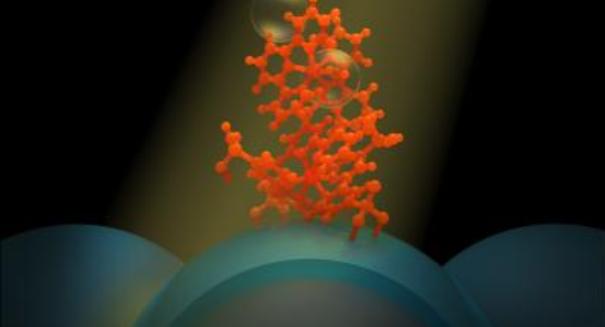
The system has two fundamental components: a molecule and a nanoparticle.
According to a news release from the University of North Carolina at Chapel Hill, researchers have developed a system that converts the sun’s energy into hydrogen fuel during the day and keeps it for use at night.
“So called ‘solar fuels’ like hydrogen offer a solution to how to store energy for nighttime use by taking a cue from natural photosynthesis,” said Tom Meyer, Arey Distinguished Professor of Chemistry at UNC’s College of Arts and Sciences, in a statement. “Our new findings may provide a last major piece of a puzzle for a new way to store the sun’s energy – it could be a tipping point for a solar energy future.”
According to the researchers, the sun generates enough energy in one hour to power every vehicle, factory and device on Earth for an entire year. Although solar panels can harness the energy to produce electricity during the day, they lose the ability to power our devices when the sun goes down at night.
The new system is a dye-sensitized photoelectrosynthesis cell, or DSPEC, and it produces hydrogen fuel by utilizing the sun’s energy to split water into its component parts. After the split, the hydrogen is isolated and stored, while oxygen is discharged into the air.
“But splitting water is extremely difficult to do,” explained Meyer. “You need to take four electrons away from two water molecules, transfer them somewhere else, and make hydrogen, and, once you have done that, keep the hydrogen and oxygen separated. How to design molecules capable of doing that is a really big challenge that we’ve begun to overcome.”
Meyer’s system has two fundamental components: a molecule and a nanoparticle. The molecule, known as a chromophore-catalyst assembly, takes in sunlight and then jump starts the catalyst to pull electrons away from the water. The nanoparticle, to which thousands of chromophore-catalyst assemblies are bound, is part of a film of nanoparticles that transports the electrons away to create the hydrogen fuel.
However, the system always failed because either the chromophore-catalyst assembly continued to break away from the nanoparticles or because the electrons couldn’t be transported away rapidly enough to produce hydrogen.
Meyer looked to Greg Parsons’ group at North Carolina State University to utilize a method that covered the nanoparticle, atom by atom, with a thin layer of a material known as titanium dioxide. By utilizing ultra-thin layers, the researchers discovered that the nanoparticle could transport away electrons much more quickly than before, with the freed electrons available to produce hydrogen. They also constructed a protective coating that keeps the chromophore-catalyst assembly tethered firmly to the nanoparticle, guaranteeing that the assembly remained on the surface.
With the earlier problems solved, the new system can covert the sun’s energy into fuel while requiring almost no external power to operate and discharging no greenhouse gases.
“When you talk about powering a planet with energy stored in batteries, it’s just not practical,” posited Meyer. “It turns out that the most energy dense way to store energy is in the chemical bonds of molecules. And that’s what we did – we found an answer through chemistry.”
Leave a Reply